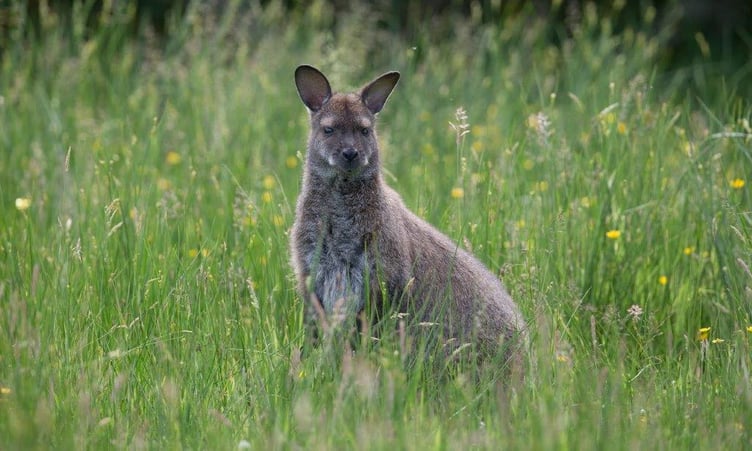The Isle of Man is now home to more than a 1,000 wallabies, confirming their established presence and extensive distribution across the island.
The figures were confirmed during a recent wildlife survey carried out by BH Wildlife Consultancy (BHWC) in partnership with the Manx Wildlife Trust and commissioned by the Department of Environment, Food and Agriculture (DEFA).
Specialists conducting the survey used advanced drone-based thermal imaging to locate and map wallaby locations.
This innovative method enabled researchers to cover large areas and gather accurate, up-to-date data on wallaby populations and distributions across the island.
Tactics employed as part of the survey, which was conducted between April 8 and April 13 this year, included breaking the island into 1-kilometer plots and flying the drones over designated areas to detect heat signatures, with 64 flight points across varied habitats, from moorlands to forests.
This approach led to detailed insights into wallaby populations, showing that, outside of Ballaugh Curragh, an additional 297 wallabies were counted across several other areas.
Notable findings include Wallaby populations detected in the Sulby Glen, Ramsey Forest, and Tholt y Will areas.
Some wallabies were even identified in King’s Forest and the western side of Ballaugh Glen.
Despite ideal detection conditions, no wallabies were observed in sites such as Central Valley and Cooildarry.

The census data, which provides a clear estimate of the density of the island’s wallaby populations, revealed that wallabies often group close to woodland or dense vegetation.
Ballaugh Curragh, a known stronghold for wallabies, remains one of the primary habitats, with a consistently high density recorded in both the 2023 and 2024 surveys.
Based on the 2023 census results and 2024 partial counts, experts have high confidence in the stability of the wallaby population within this area.
The survey also mapped the feral goat population, concentrating along the Garff coast, particularly around Bulgham Bay, where 245 goats were counted.
The drone survey, which stretched from Laxey to Port Cornaa, confirmed that natural barriers like rivers effectively limit the goats’ range.
The island’s wild wallaby population boom began when a number of the species escaped from the Isle of Man’s only wildlife park several decades ago.
Since then, the wallabies have adapted well to the island’s environment, bred and have established themselves in parts of the island, particularly in the northern and western regions.
Red-Necked Wallabies escaped into the Ballaugh Curragh in the north of the Isle of Man in the 1960s from the Curraghs Wildlife Park.

Leigh Morris, Director of the Manx Wildlife Trust, said the survey results shed a unique light on the island’s wallaby population for the first time.
He added: ‘We are confident that the drone data is accurate for the areas we have surveyed, but inevitably some will have evaded us.
‘Prior to the survey, population estimates ranged from scores, to hundreds, and this is therefore an important first step to better understand the number of our feral wallabies.
‘Our aim is to ensure that future conversations about the island’s wallabies [and goats], and any potential need to manage the population are appropriately informed’, he added.
Department of Environment, Food and Agriculture Minister Clare Barber said: ‘The department is now looking at the best ways to assess the health of the wallaby population.
‘Once we have that data, we can evaluate the impact on the local environment and determine whether any changes in management are necessary.’




